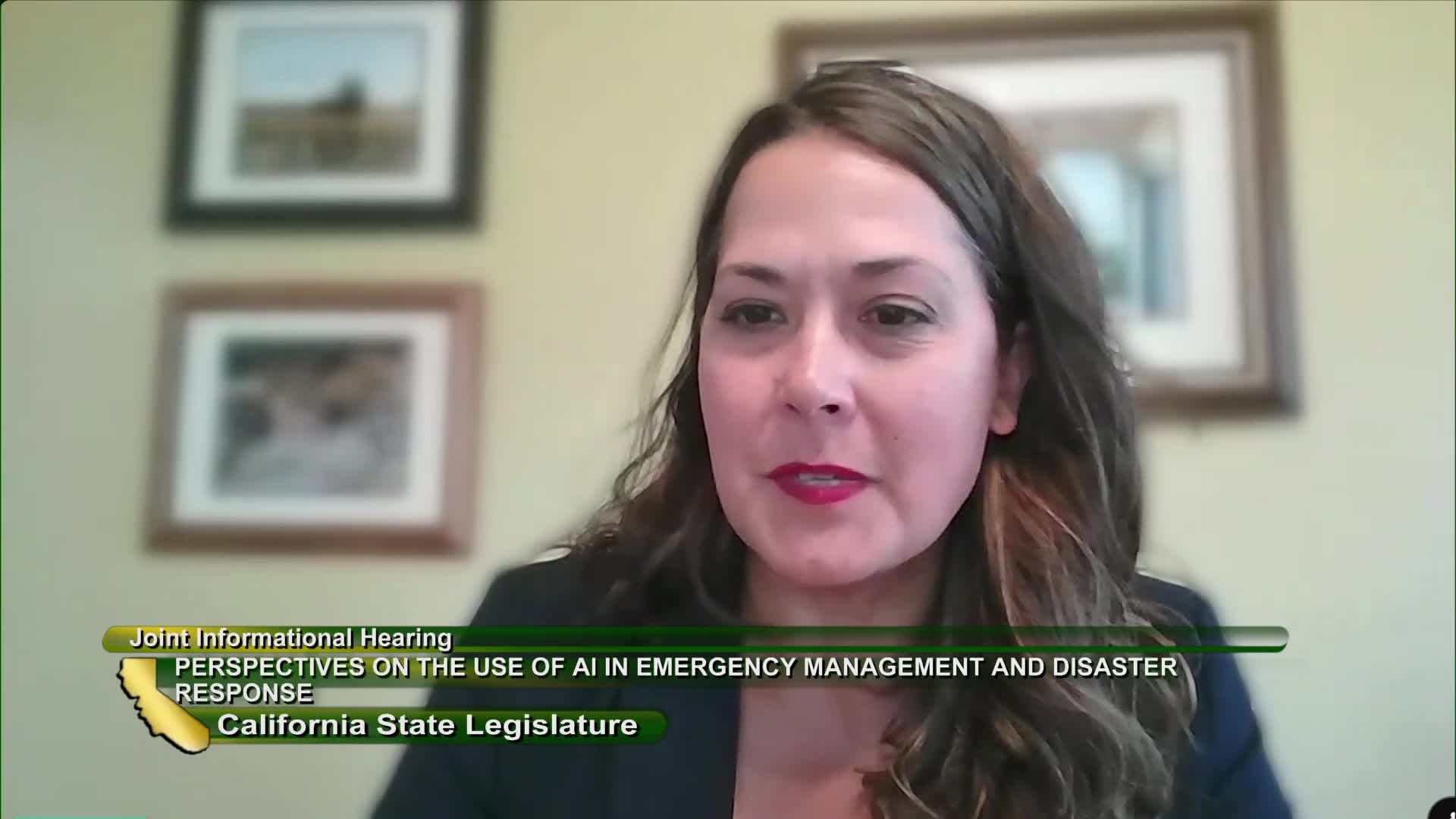AI Revolutionizes Emergency Management Amid Rising Concerns
August 29, 2024 | Governmental Organization, Standing Committees, California State Senate, Senate, Legislative, California
This article was created by AI summarizing key points discussed. AI makes mistakes, so for full details and context, please refer to the video of the full meeting. Please report any errors so we can fix them. Report an error »

During a recent government meeting, officials discussed the multifaceted implications of artificial intelligence (AI) in emergency management, highlighting both its potential benefits and significant risks. The conversation underscored the distinction between different types of AI, particularly predictive AI in controlled environments versus generative AI in less regulated settings.
Officials acknowledged that AI is already being utilized by government staff, often without explicit oversight, raising concerns about information security and the accuracy of AI-generated content. They emphasized the need for robust policies and procedures to govern AI use, particularly in sensitive areas such as emergency preparedness.
One of the promising applications of AI discussed was its role in enhancing public education and outreach regarding emergency preparedness. AI tools could help create engaging content, including videos and graphics, to better inform communities about disaster readiness. Additionally, AI could assist in indexing and aligning various emergency plans developed by local agencies, ensuring consistency and collaboration among different jurisdictions.
The meeting also addressed the potential of AI to support vulnerable populations during disasters. For instance, officials explored using AI to generate American Sign Language (ASL) videos for deaf or hard-of-hearing individuals during evacuations. They also considered how AI could facilitate communication with indigenous populations who speak unwritten languages, ensuring that critical information reaches all community members.
However, the discussions were not without caution. Concerns were raised about the accuracy of AI-generated information, particularly in high-stakes situations where decisions could impact lives. Officials highlighted the risk of misinformation being spread by bad actors using AI to create misleading content that mimics official communications.
Cultural competence in AI was another critical point of discussion. Officials noted that AI systems often reflect biases, particularly those of older white males, which could lead to misrepresentation or exclusion of diverse community perspectives. They stressed the importance of evaluating AI-generated content for biases to ensure equitable communication during emergencies.
Legal liabilities associated with AI use were also a significant concern. Officials pointed out that AI tools, such as note-taking systems, could inadvertently expose government agencies to public records requests or inaccuracies that might compromise confidential planning processes.
In conclusion, the meeting highlighted the dual nature of AI as a powerful tool for enhancing emergency management while also presenting substantial risks that require careful consideration and proactive policy development. Officials expressed a desire for collaborative efforts across government levels to navigate these challenges and harness AI's potential for the benefit of all communities.
Officials acknowledged that AI is already being utilized by government staff, often without explicit oversight, raising concerns about information security and the accuracy of AI-generated content. They emphasized the need for robust policies and procedures to govern AI use, particularly in sensitive areas such as emergency preparedness.
One of the promising applications of AI discussed was its role in enhancing public education and outreach regarding emergency preparedness. AI tools could help create engaging content, including videos and graphics, to better inform communities about disaster readiness. Additionally, AI could assist in indexing and aligning various emergency plans developed by local agencies, ensuring consistency and collaboration among different jurisdictions.
The meeting also addressed the potential of AI to support vulnerable populations during disasters. For instance, officials explored using AI to generate American Sign Language (ASL) videos for deaf or hard-of-hearing individuals during evacuations. They also considered how AI could facilitate communication with indigenous populations who speak unwritten languages, ensuring that critical information reaches all community members.
However, the discussions were not without caution. Concerns were raised about the accuracy of AI-generated information, particularly in high-stakes situations where decisions could impact lives. Officials highlighted the risk of misinformation being spread by bad actors using AI to create misleading content that mimics official communications.
Cultural competence in AI was another critical point of discussion. Officials noted that AI systems often reflect biases, particularly those of older white males, which could lead to misrepresentation or exclusion of diverse community perspectives. They stressed the importance of evaluating AI-generated content for biases to ensure equitable communication during emergencies.
Legal liabilities associated with AI use were also a significant concern. Officials pointed out that AI tools, such as note-taking systems, could inadvertently expose government agencies to public records requests or inaccuracies that might compromise confidential planning processes.
In conclusion, the meeting highlighted the dual nature of AI as a powerful tool for enhancing emergency management while also presenting substantial risks that require careful consideration and proactive policy development. Officials expressed a desire for collaborative efforts across government levels to navigate these challenges and harness AI's potential for the benefit of all communities.
View full meeting
This article is based on a recent meeting—watch the full video and explore the complete transcript for deeper insights into the discussion.
View full meeting
